
J and the Scarlet Ibis

Once there was a boy who was born sick with disabilities. Nobody thought the boy would live, but he did. He had physical disabilities and he had intellectual disabilities. Nobody thought he would walk, but his brother taught him how to walk. The disabled boy learned how to speak. He was smart. His brother would take him to the swamp near their house and there the brother had plans on how to teach the disabled boy how to run, and swim, and do all sorts of physical things kids his age did. The brother planned to do all of these things before the disabled boy went to school. The disabled boy was going to all the things normal little kindergartners could do.
But things didn’t work out that summer. The brother couldn’t get the disabled boy to learn fast enough. The disabled boy struggled, but the brother didn’t care and pushed even harder. He took the disabled boy out on a boat and forced him to row it when a storm was bearing down on the two boys. After the disabled boy struggled to row, the brother raced home while the disable brother cried out to him, “brother, brother, don’t leave me” as the storm raged around them.
When the brother turned to see how far back the disabled boy was, he found him on the ground, dead.
I’ve read the Scarlet Ibis once before, in high school back in Canada. I barely remembered it when J and I read it over the holiday break to help J prepare for finals, but I knew it had something to do with a sick boy, a red bird, and both the bird and the sick boy ending it up dead at the end of it all. I didn’t remember the disabilities. I didn’t remember the brother’s efforts—his zealous rigour of “training” the disabled boy in making just like everyone else. I didn’t remember the brother’s motives for that training. The brother didn’t try to teach his brother how to walk or train him how to swim and row because he loved him. He did those things because he was embarrassed to have a disabled little brother.
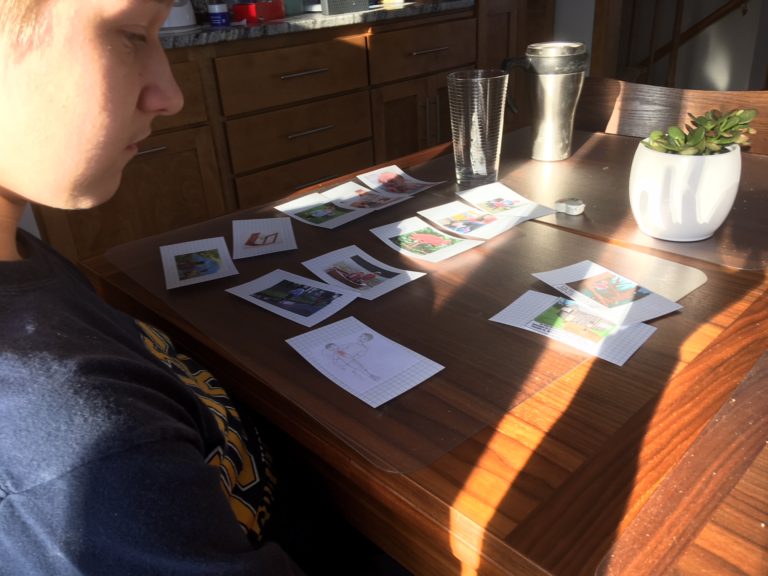
J loved this story. And for a kid who struggles with reading comprehension, he sure got this story. Out of the seven short stories we read over break in preparation for his final, he understood this one, liked this one, the best. He knew right away that the bird symbolized Doodle (the disabled kid) without any prompting or prep questions from me. He remembered that the brother didn’t like Doodle because he was disabled. He remembered the brother was embarrassed of Doodle. He remembered all of the important plot points of the story.
And as we went through the story, as we went through the plot points and meaning of the story, I was uncomfortable. I was uncomfortable because I’ve recognized the brother at different point in my life. I was uncomfortable because I have a son with disabilities who was reading a story about a boy who has disabilities who ends up dying, because he’s been asked to do too much—more than he can handle. This is an interesting story to read and discuss with a kid with disabilities. But we read it, we discussed it, and we’ve been talking about it for days now. In fact, reading and discussing this story has helped me understand better how to help J read and understand other stories.
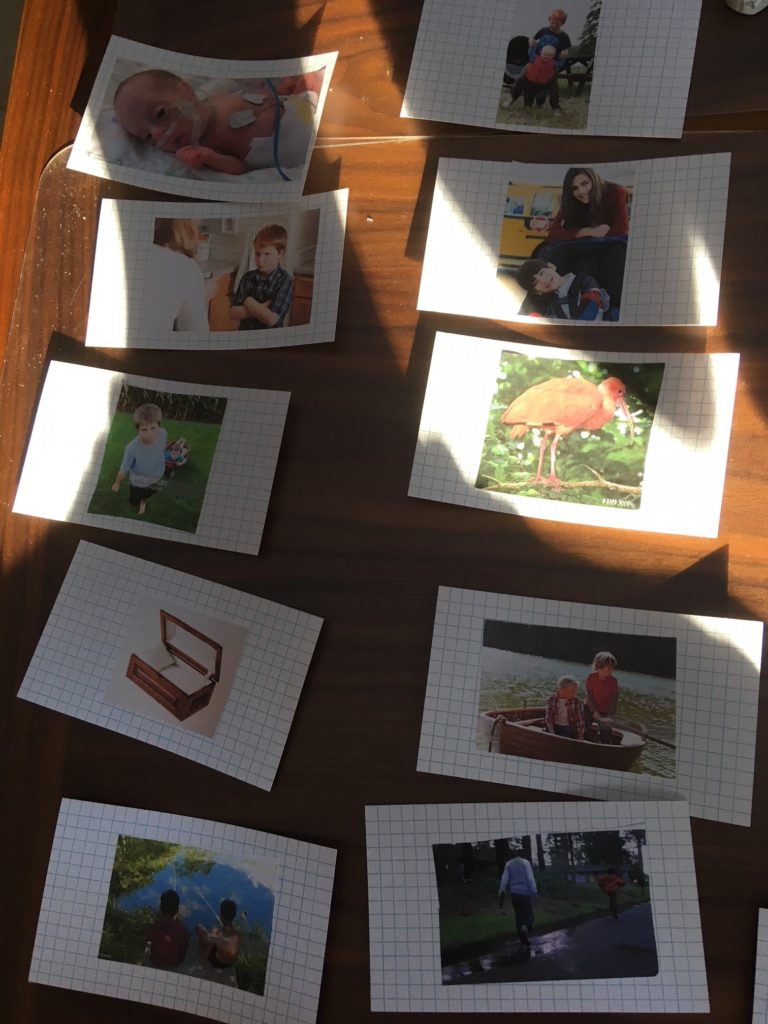
After we read this story, I made a modified version of the Lindamood Bell approach in helping J with comprehension (the words make pictures strategy). I googled pictures of the main points of the Scarlet Ibis, glued them to cue cards, and had J practice writing out the plot by first putting the cards in order and then write a sentence describing each picture (scene). I couldn’t believe how well this system worked for J. In fact, I’ve never seen him write this much before in one sitting. And there was no frustration involved at all.
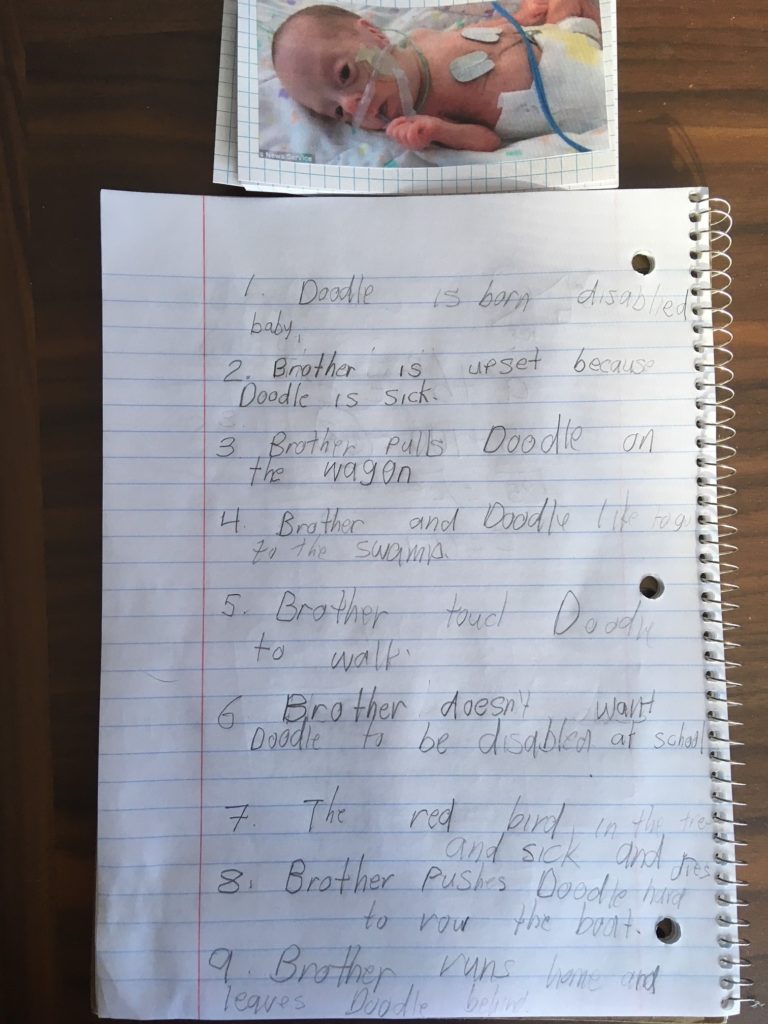
After doing this for a couple of the other short stories we read, I discovered this cool site called storyboardthat.com. You can create your own comic book strip of the stories for free. Or, if you don’t have time like that, there are a lot of already made (by other people) storyboards for famous short stories. Which was wonderful, because I printed those out and put them on cue cards and used that same strategy of mixing up the cards, having him put them in order, and then write about the pictures. The system worked well with the other stories too, but for some reason, J naturally gravitated and remembered the Scarlet Ibis the most.
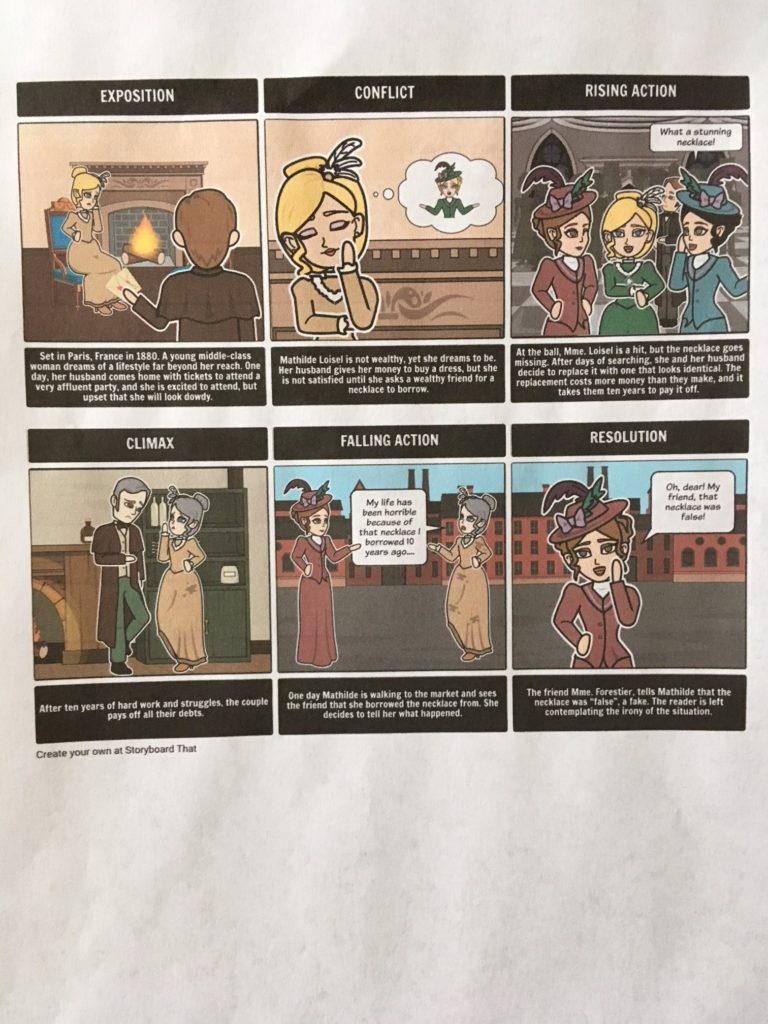
Despite my excitement in J understaning the Scarlet Ibis, the story has been in the back of my mind for days now. It’s made me question the reasons why I interact with J in the ways I do. We push J a lot, and there are a lot of tears on both sides. Yes, sometimes I am embarrassed that he is disabled. And I want him to be and act normal because I don’t like the fact that he has disabilities. So yes, I guess I have a little bit of brother in me from time to time.
But there’s the part of me that pushes because I love him, I want the best for him, I want him to have a fair shake in a world that is very unfair to “different people.” I know he can do great things, he just needs someone to spend the extra time and show him in the way that he learns best. I know he has something to offer the world. I’ve had to understand J more in order to know the way he learns best, so even though I know I have a little of that “brother” in me sometimes, I do push because I want him to be the best he can be. I hope that part comes out more often than the brother part. Those are hard motives to keep in check.
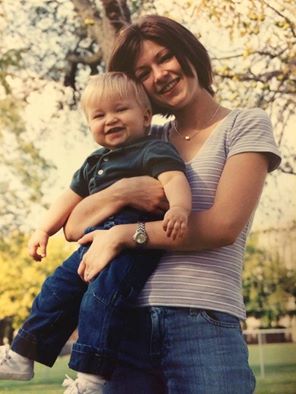
I asked J if he could identify with Doodle, the disabled boy at all, to which he said, “no, why?” Sometimes J forgets that he has autism and learning disabilities. I don’t know if that’s because he, being autistic, thinks everyone else is different because we don’t think like him. I don’t know that it’s because because of his hard work, he does learn things and overcomes a lot of the learning disability part and so he doesn’t dwell on the LD part. Maybe he just assumes that life is just that hard for everyone. I’m sure there are plenty of reasons why he doesn’t readily identify himself as being disabled. He sure did seem to understand Doodle’s efforts to try to become like everyone else. He understood how hard Doodle had to work because his brother pushed him. We had a discussion whether people should change people with disabilities to make them be like everyone else (to which he had a resounding no 🙂 ) We talked about selfishness (the brother’s motives) and how that can hurt other people. There was plenty to talk about.
J’s reading fluency, as it stands right now, is probably pretty close to grade level. His reading comprehension level is probably at about a grade 3 level. The Scarlet Ibis is a heavy story to read and I was afraid that the Scarlet Ibis was too much for J–that he would become upset about reading a story about someone with disabilities that was treated poorly, especially by those he trusted the most. Disabilities are hard to process for everyone. It’s hard to see sometimes how the world treats people with disabilities, and I thought that might scare him. But New Year’s Eve, J listed Scarlet Ibis as one of his favourite stories of the year. It’s still the story out of the 7 we read over break that he remembers the most.
I know there are probably some people out there who think J should be reading stories closer to his comprehension level, and to “build up from there,” or that having a child with disabilities read a story like this might be too much. We do read stories closer to his comprehension level, but I also think it’s important to have him reading and processing stories like this too. I think it’s important for him to read stories about kids with disabilities, even the “emotionally” hard ones. Those “trigger” stories might be hard, but I really believe if we discuss them in the right ways, it can help broaden our minds. That’s the great thing about literature. It talks about the things in real life that we might not be able to talk about in real life. Literature, lets us talk about the real life things in a safe place, in the ways we are able and ready to talk about them. Even if we can’t access all of the meaning in a story, we can access the parts that resonate with us, and it’s those things that teach us a little more about ourselves. Literature can be like social stories. Literature is just a hardcore version of social stories.

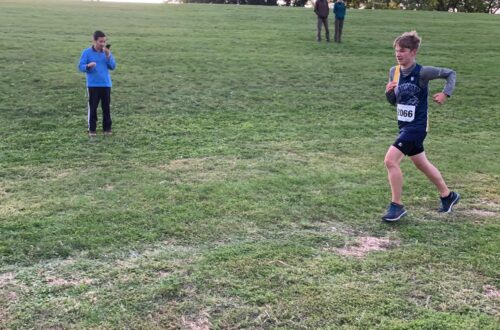
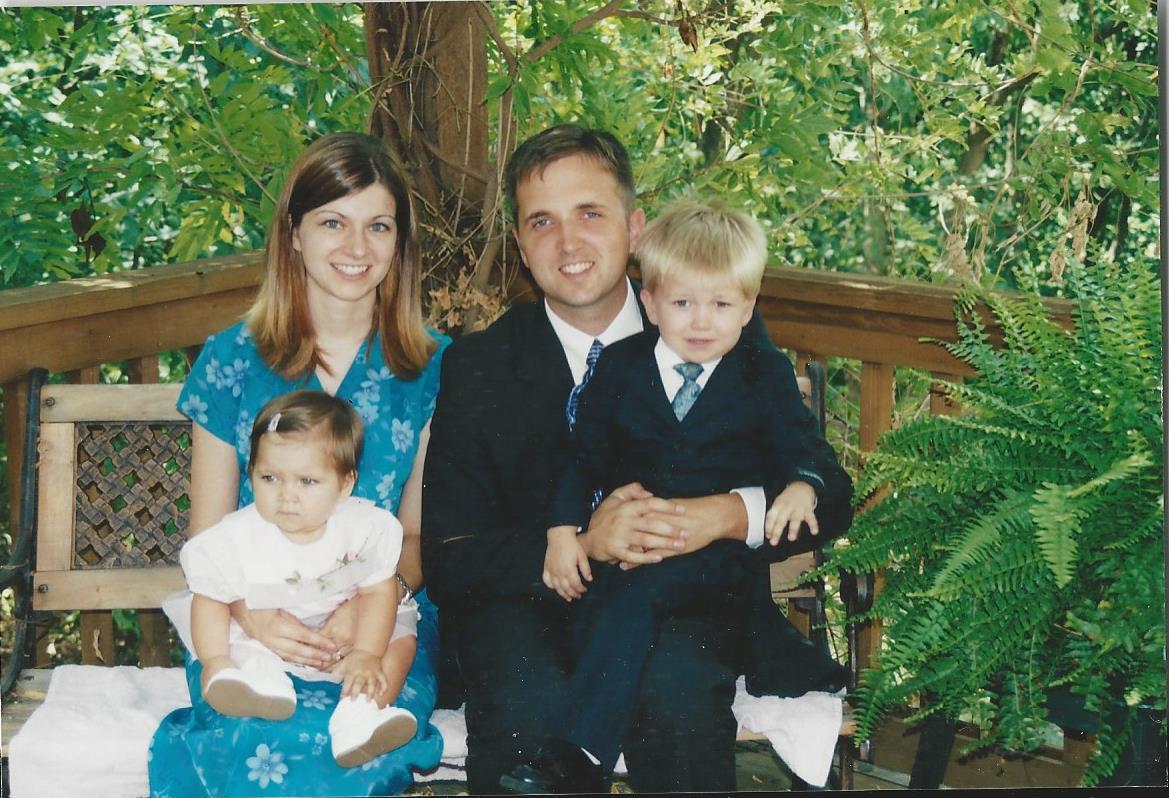
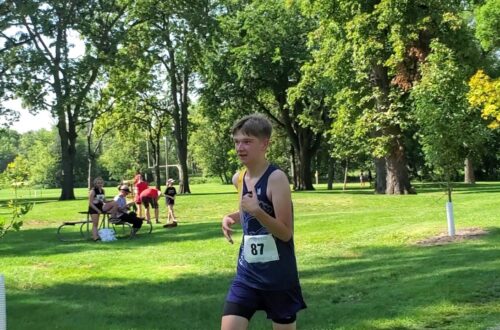
2 Comments
Carol Forster
Another remarkable lesson. I think you need to be an autism specialist in the school district. You are able to transfer knowledge in a way that is so meaningful. It could benefit so many. I am thankful each week that I get to read Another blog. I am continually learning. Thank you for sharing each week.
sarahwbeck
Aww, thanks Carol, you are too kind. I am NO expert in any sense of the world. Being an autism mom, though, sure teaches me a lot about myself and about other people. And as hard as it is sometimes, it’s an amazing thing too.